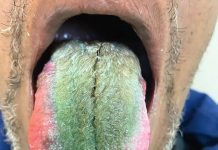Transformation Hub Where healthcare challenges find solutions Patients Operations Care Delivery Payment  GETTY IMAGES
GETTY IMAGES
As the healthcare system deals with COVID-19 surges across the country, the spread of the highly transmissible delta variant and overfilled hospitals, workers are facing another fall in the virus’ grip. “The moment I heard about the delta variant, I felt a headache coming on,” said Elizabeth DuBois, a nurse practitioner and principal and chief people officer at COPE Health Solutions, a healthcare consulting company. “It’s not something we’re ready to handle again mentally.” In the Medscape National Physician Burnout & Suicide Report 2021, 79% of the more than 12,000 physicians who responded said their burnout began before the pandemic. During the pandemic, 93% of healthcare workers polled by Mental Health America said they had experienced stress in the past three months, 86% reported anxiety, 77% reported frustration, 76% reported exhaustion and burnout, and 75% said they were overwhelmed. That’s why it’s important for employers to understand the level of burnout at their organizations and take steps to decrease it, DuBois said. She suggests implementing some sort of mechanism, like a weekly call survey, one-on-one check-ins or having managers do rounds, to regularly assess burnout levels and figure out which interventions are working and which are not. “You’re setting up some sort of regular cadence to make sure you’re measuring the pulse. You’re measuring the burnout,” DuBois said. And at a Kaiser facility in southern California, COPE Health worked with the organization to identify high school and college students and adults interested in healthcare to assist during the pandemic. Things like higher rates of turnover, absences and tardiness and a decrease in overall professionalism can be indicators of burnout among staff, DuBois said. Instead of taking punitive actions against workers, employers can instead look at the cause of those transgressions and try to help the employee. Employers can also help reduce the burden on workers by allowing them to work at the top of their license, DuBois said. By training nonclinical staff to take on administrative tasks, clinical staff can focus on patient care, she said. Nationwide, 24 states plus the District of Columbia, for instance, have given full practice authority to nurse practitioners. Delaware became the latest to join the movement in early August when Gov. John Carney enacted a law allowing NPs to practice without supervision by a physician.
Managing fatigue Create a regular sleep, exercise and meal schedule Get at least seven hours of sleep per 24 hours, incorporating power naps if needed Relax for 30 to 60 minutes before bed, free of electronics Reserve your bed for sleeping Limit alcohol and caffeine, especially before bed Make your sleeping area a sanctuary, free from disturbances and distractions Stay active, ideally outdoors
Source: American Academy of Sleep Medicine
“It’s really looking at each individual’s tasks and thinking about what can be redistributed,” DuBois said. Plus, it exposes more people to the healthcare industry and what types of jobs are available, she said, which can help address the workforce shortage and reduce the strain it puts on existing workers. In the past year, COPE Health worked with Adventist Health to launch a medical assistant school with two cohorts in California to help the system build its own staffing pipeline. The classes were mostly virtual, which allowed people in the community to attend while still maintaining their full-time jobs.Sleep’s role in healthcare worker burnout The American Academy of Sleep Medicine said that sleep deprivation, usually a result of shift-work schedules, high workloads, long hours, sleep interruptions and not enough recovery sleep, is often overlooked as a cause of healthcare worker burnout but can be a major contributor. In a survey of 963 healthcare workers last September, 96% reported sleeping poorly, 56% reported burnout and 30% reported insomnia. “Healthcare is one of those things where it’s kind of common knowledge or common awareness that, after a full 24-hour call, you’re not necessarily functioning at your best,” said Dr. Raj Bhui, a sleep disorder specialist who serves on the public safety committee for the American Academy of Sleep Medicine. “What we see is when people are sleep deprived or not having regular sleep, they do have decreased emotional regulation.”
STRATEGIES: 7 tips for employers on managing workplace burnout
Offer opportunities for group support and therapy
Redistribute tasks so workers can perform at the top of their license
Keep track of burnout levels
Conduct a human resources assessment to pinpoint causes of burnout
Create a workforce pipeline
Reinvest in staff and give them opportunities for growth
Use technology to reduce burdens on workers.
Source: Modern Healthcare reporting
And when someone’s safety depends on having a healthcare worker being calm and collected, helping ensure workers can get adequate rest is important, Bhui said. “Sleep and mental health and sleep and emotions are very linked. It is a cycle,” Bhui said. “It’s very important to break that cycle and identify it as early as possible.” Employers can encourage healthier sleep habits by creating regular, spaced-out shifts for workers and offering other assistance like childcare that can reduce staff stressors outside of work, Bhui said.
Tags: Operations, This Week in Healthcare, MH Magazine, Coronavirus, Operations, Staffing, Kaiser Permanente, Adventist Health System, Labor, Workforce, Safety, Nursing, Transformation, Behavioral Health, Transformation Hub
Source link : https://www.modernhealthcare.com/operations/addressing-healthcare-worker-burnout-another-covid-19-fall-nears











